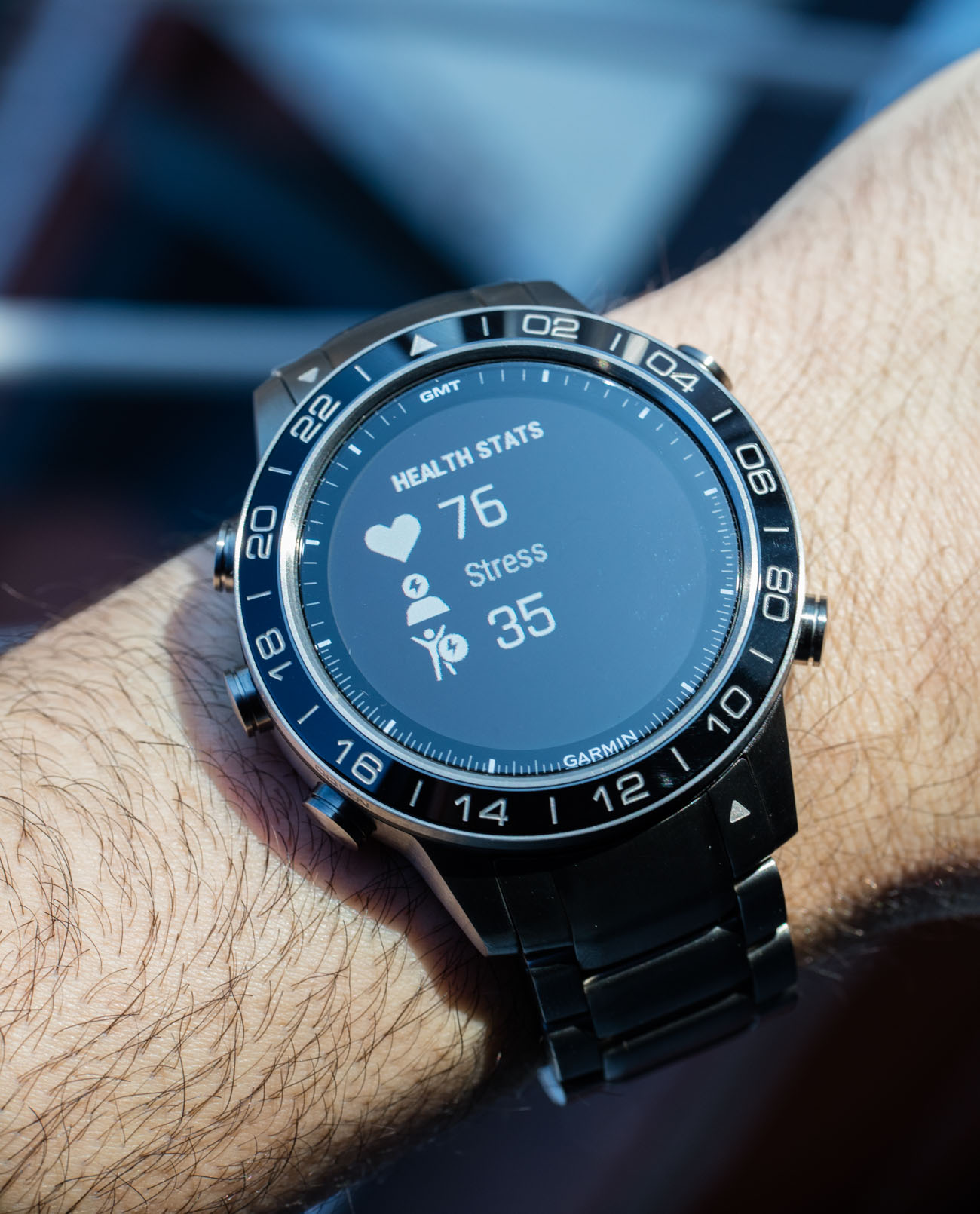
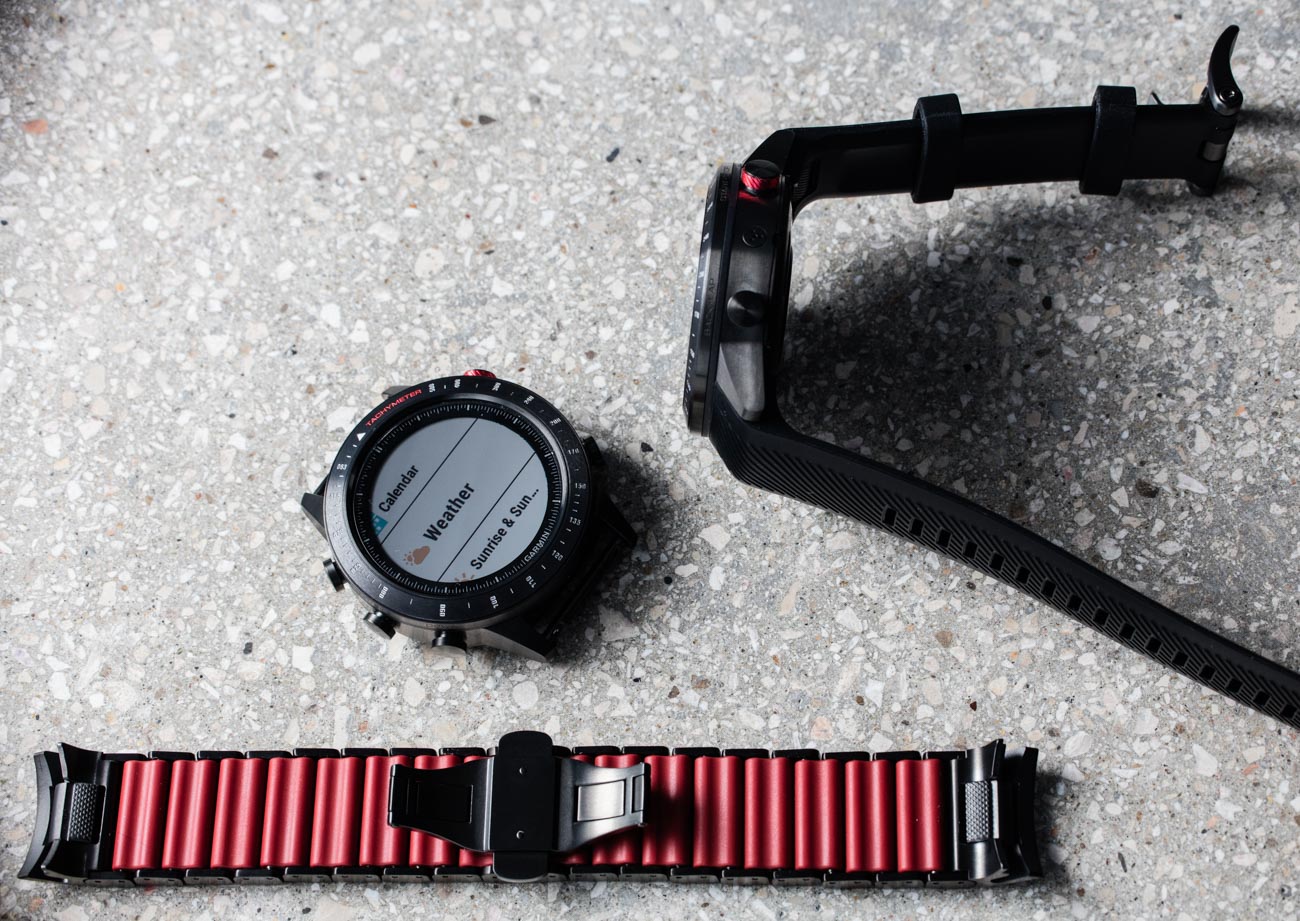
Garmin Fenix smartwatch users have become accustomed to Garmin’s particular take on the smartwatch screen. Garmin uses a reflective screen technology that actually appears more legible in direct light, as opposed to washed-out, which is what happens on traditional LCD screens. The full-color screen has a persistent always-on display that I entirely prefer to smartwatches with normally black-colored screens. A backlight helps users view the watch in low light or in the dark. Garmin chose this particular screen technology for a few key reasons mainly focused around “at-a-glance legibility in daylight,” as well as for battery-life maximization. Batteries are still the weakest technological link in smartwatches, and pretty much all mobile devices these days. I do think Garmin’s engineers struck a fair balance between screen brightness (which is adjustable, of course) and battery life (which can vary from as low as nearly 30 hours with constant GPS tracking, up to more than a month of battery power when in more efficient modes).
Garmin also does not use touchscreens at this time, instead preferring the user to rely on the five case buttons. Even though I agree that using buttons to control the interface is more precise and less prone to error, these days users instinctively put their fingers on the screen to control it. Other companies, such as Suunto, employ operating systems and hardware that allow the user to choose between pushers or a touchscreen. Garmin admits that they have tested this approach but didn’t find the results to their liking. That said, I anticipate in the future that Garmin smartwatches will potentially adopt a system in which users can interface with their smartwatches either via buttons (pushers) or using a touchscreen.

Garmin Marq User Interface & Smartwatch Functionality
It will not be possible to discuss everything you can do with the Garmin Marq watches because of the sheer number of functions inherent in the software that Garmin has been developing for years now. As I said, Garmin uses its own proprietary smartwatch software, and the result is a snappy and rather refined user experience, though there is a very real learning curve for novices to the Marq’s software, given the sheer number of options. If anything, the Garmin Marq feels like the anti-Apple Watch in terms of user customization options. Whereas Apple famously limits user interface options and customization, Garmin is very gung ho about allowing serious enthusiasts to tweak the interface as much as possible.
Compared to the Fenix Chronos, I found the Marq models to have a vividly increased level of software utility, and more attractive screens and interfaces. Garmin still has a lot to learn about creating beautiful watch dials, but in other respects, their many information screens are well-designed and easy to read. The science of presenting information accessible to human users on small screens is becoming increasingly sophisticated, and it’s interesting to see how Garmin takes user feedback when deciding what information to make available on-screen and the many options available for what you look at when you glance down at your smartwatch.
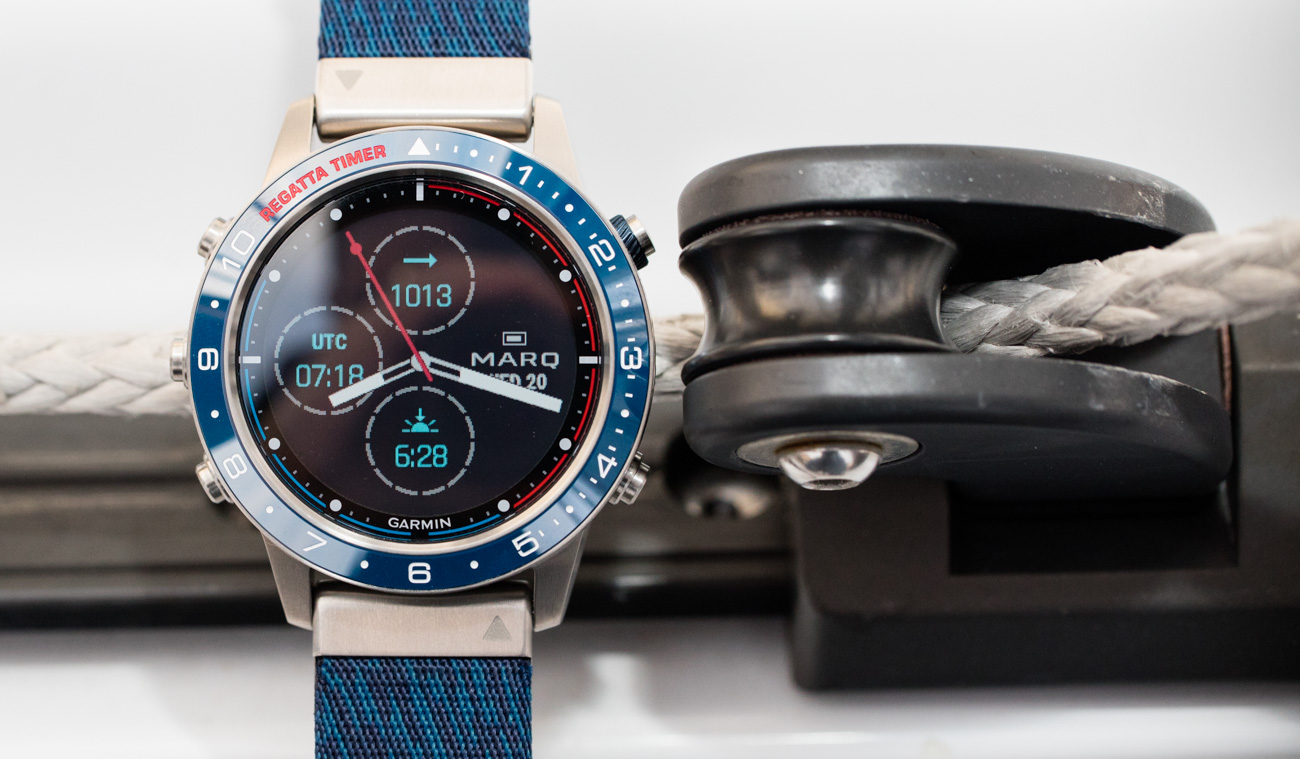

What you see on the dial/screen of the Marq depends on what you are currently doing, as well as the model you have. The Marq Captain, for example, has software designed for sailing races or to monitor a variety of on-board boat sensors and can also connect with other Garmin nautical electronics equipment. You can even steer a boat using your smartwatch, as well as control a Fusion entertainment system. Similarly, the Marq Aviator has information screens useful to pilots while they are currently in the air. While there is a good amount of overlap, each of the Marq watches has unique software designed to focus on its intended use.
One of the more palatable examples of this can be found in the Marq Driver. One of the reasons for the added cost of this product is the compilation of over 260 famous race tracks in the onboard memory. While you can create your own custom start and stop points anywhere you like, the purpose of the pre-loaded racetracks is really cool. In combination with GPS, the Marq Driver will automatically start and stop laps when you cross the start/finish line. All that is required is for the user to indicate what track you are currently on. Doing this automatically feeds lap times and other performance data directly to your smartwatch and can even speak to you via Bluetooth-connected speakers.
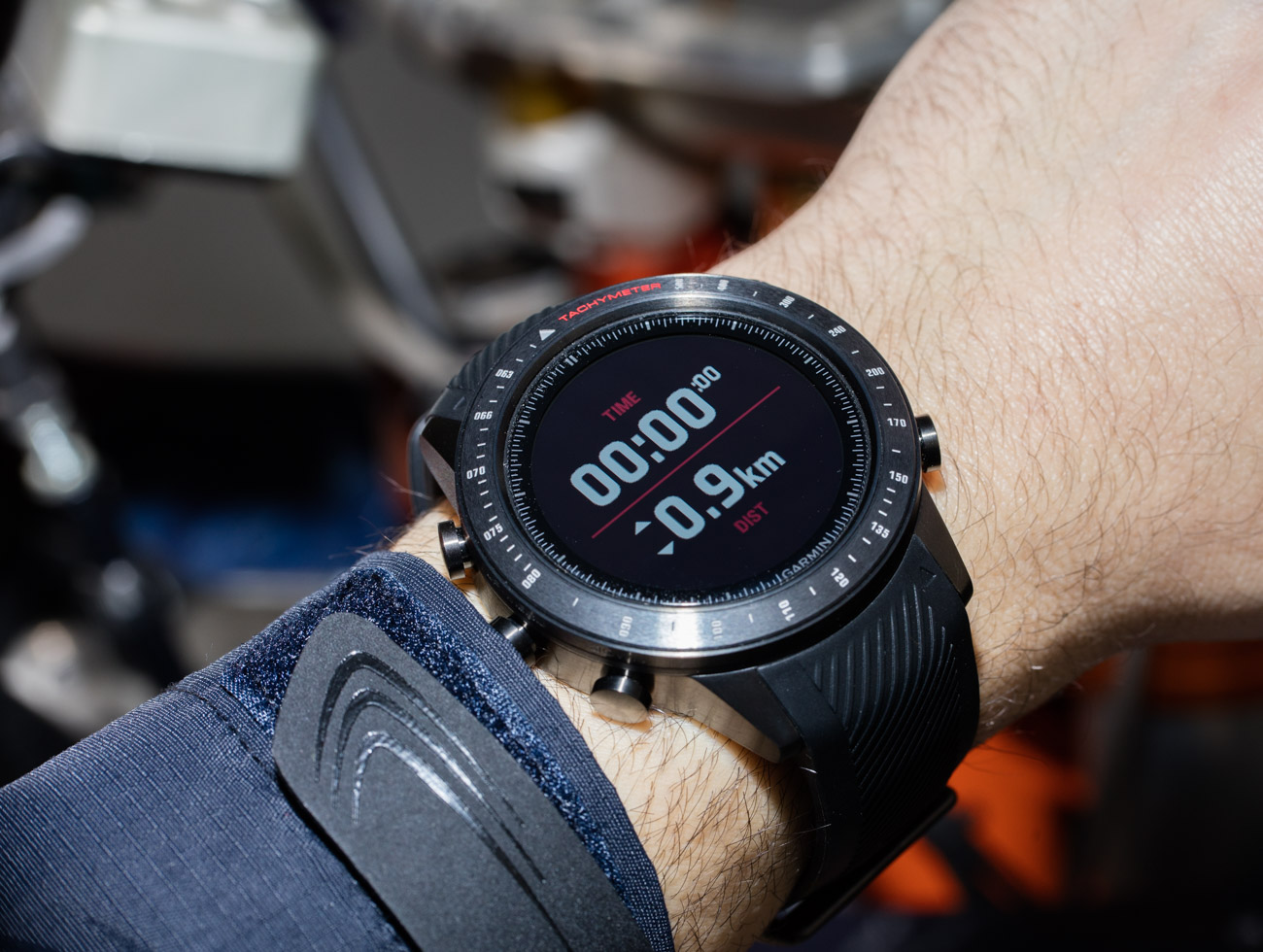
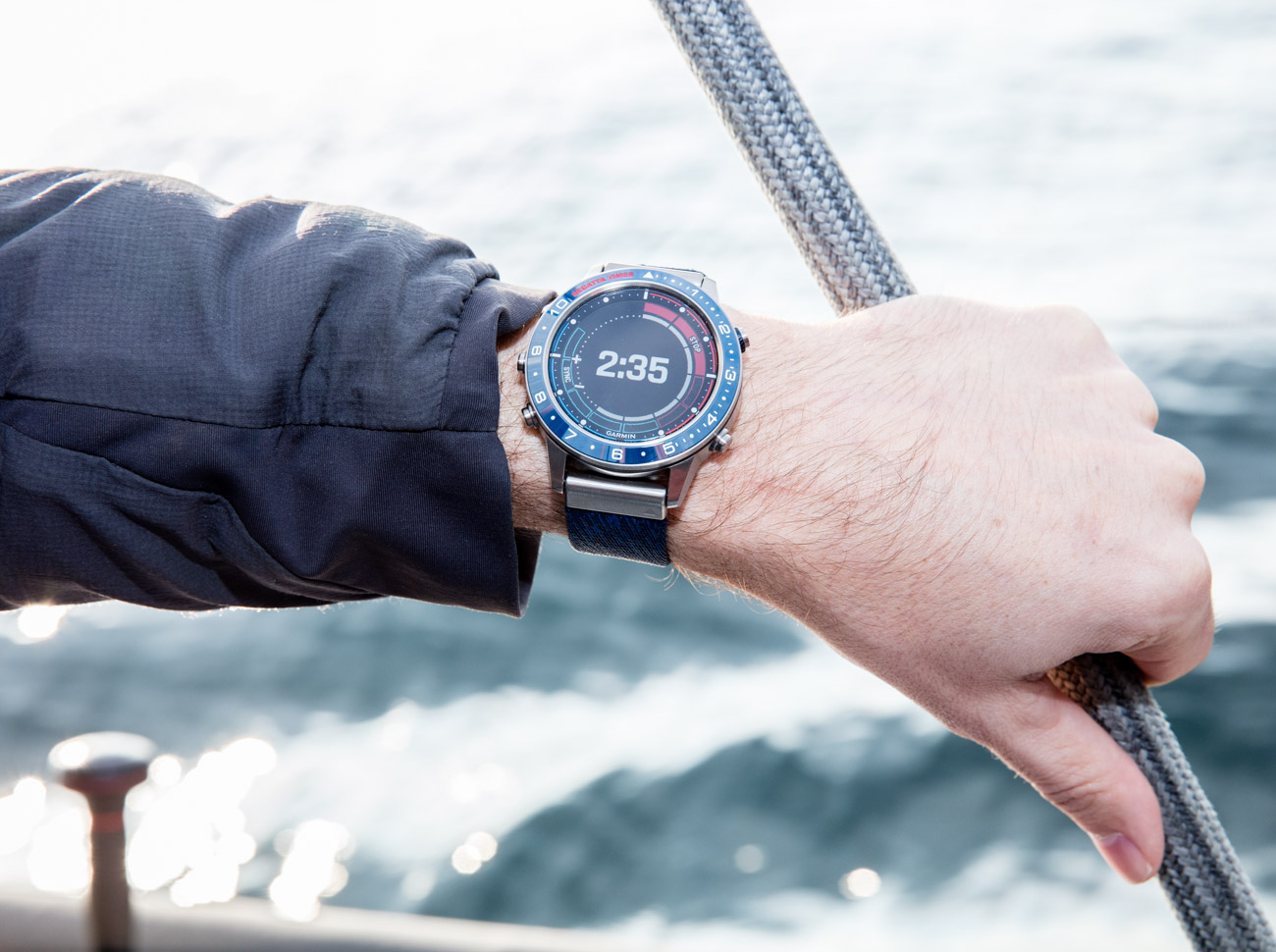
As GPS specialists, the Marq watches have almost unprecedented quality in terms of navigation and mapping capabilities. The 24 GB of onboard storage in the watches allows Garmin to pre-load world maps without needing to connect to phones or the internet. Specialized maps, such as nautical charts, can also be purchased from Garmin and uploaded to the watches. The various navigational features in the Marq watches are extremely impressive and offer a lot of functionality for the casual urban dweller all the way to the serious outdoor enthusiast.
Watches in the Marq collection easily connect to your smartphone and doing so will likely mostly appeal to those who want to share exercise activity with their phones, as well as anyone who wants phone notifications on their watch. Garmin’s smartphone software is actually pretty cool and keeps getting more and more attractive in its design. Those keen to track or simply know their activity performance will be delighted with a slew of data intended for the world’s most serious competitive athletes but feels accessible enough even for weekend fitness enthusiasts. Note that Garmin has a suite of social software options that allow you to share your activity data with others, as well as connect and compete with friends or even strangers.
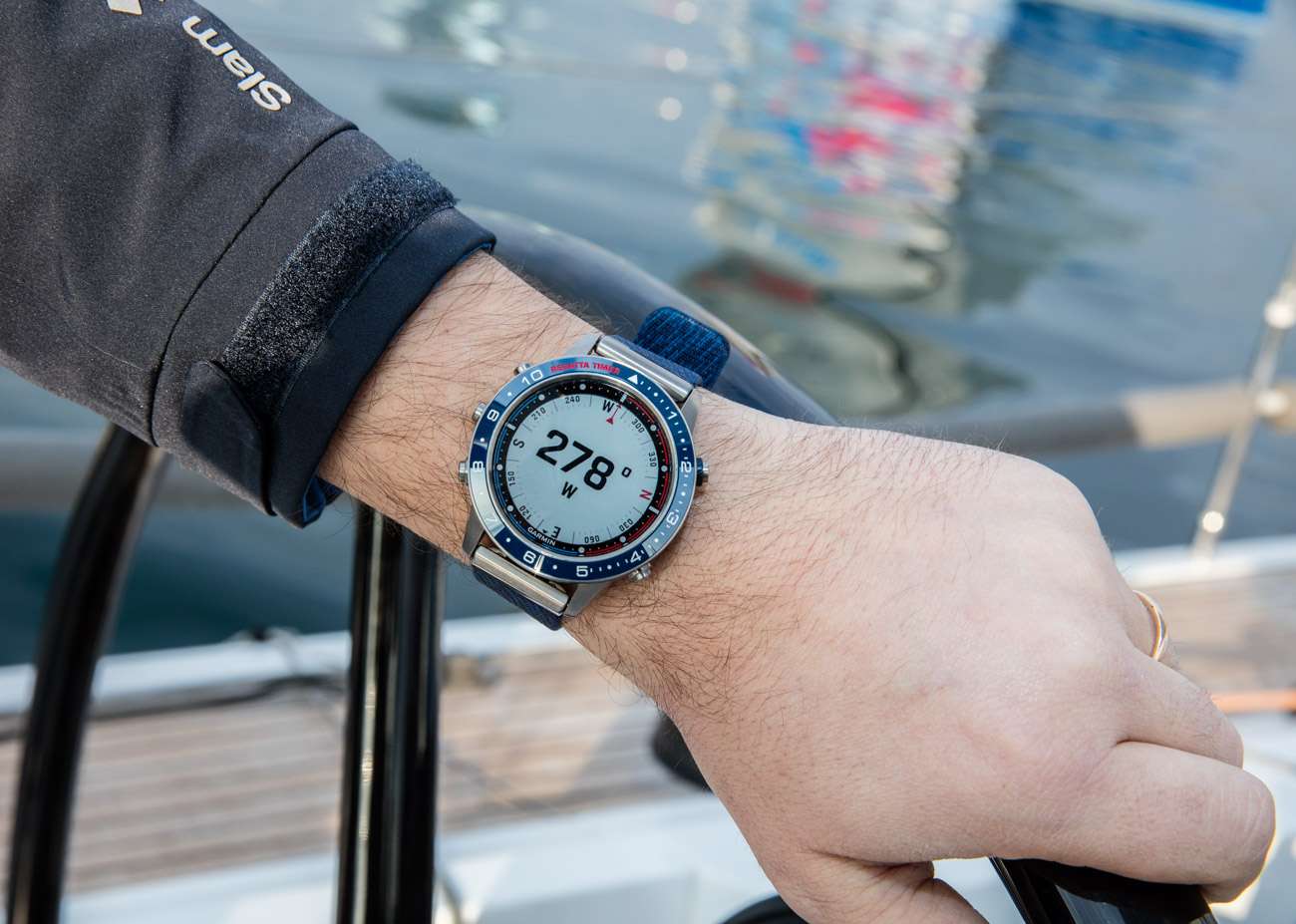
The Age Of The Luxury Smartwatch Is Here
An upcoming full review of the Garmin Marq smartwatches will allow me to speak more about my own personal experience wearing and using Garmin’s latest and greatest smartwatch product. What I can say is that this is a real luxury item within the smartwatch segment — different from calling the Marq a luxury item. Its most serious competitor in that regard is probably the Apple Watch, which is less expensive than the Marq.

More traditional luxury brands such as Montblanc, TAG Heuer, Hublot, Louis Vuitton, and others are competing in the smartwatch space, but typically with design and notoriety on their side, as opposed to functionality. Garmin intentionally distances itself from these products that seem like luxury-packaged basic smartwatches, as opposed to luxury tool smartwatches that attempt to advance the segment as a whole. The difference is that Garmin is trying to make the nicest possible tool watches with an ever-expanding list of utilitarian features, whereas the other luxury brands are trying to create high-end housings for more universally available smartwatch technology and third-party operating systems like Google Android Wear. On paper, this might be a subtle distinction for many consumers, but over time I see these different approaches to high-end smartwatches resulting in some very interesting evolution trends for the product category as a whole.
Speaking of the category as a whole, the Garmin Marq finally feels like a smartwatch that people might opt for instead of a traditional Swiss sports watch. I don’t think collector or dress watches are under any threat, but the sub-$5,000 Swiss sport watch market (a massive segment) has serious cause for concern. The Marq’s quality and poise are on par with that of many Swiss watches. The time will soon come when consumers may find high-end smartwatches and traditional watches to offer similar aesthetic and lifestyle wearing experiences. They will then be asked to choose between the vast functional and fun features inherent in a smartwatch and the relatively simple and straightforward functions of a traditional watch. I’m guessing that more and more will opt for the more modern choice.
